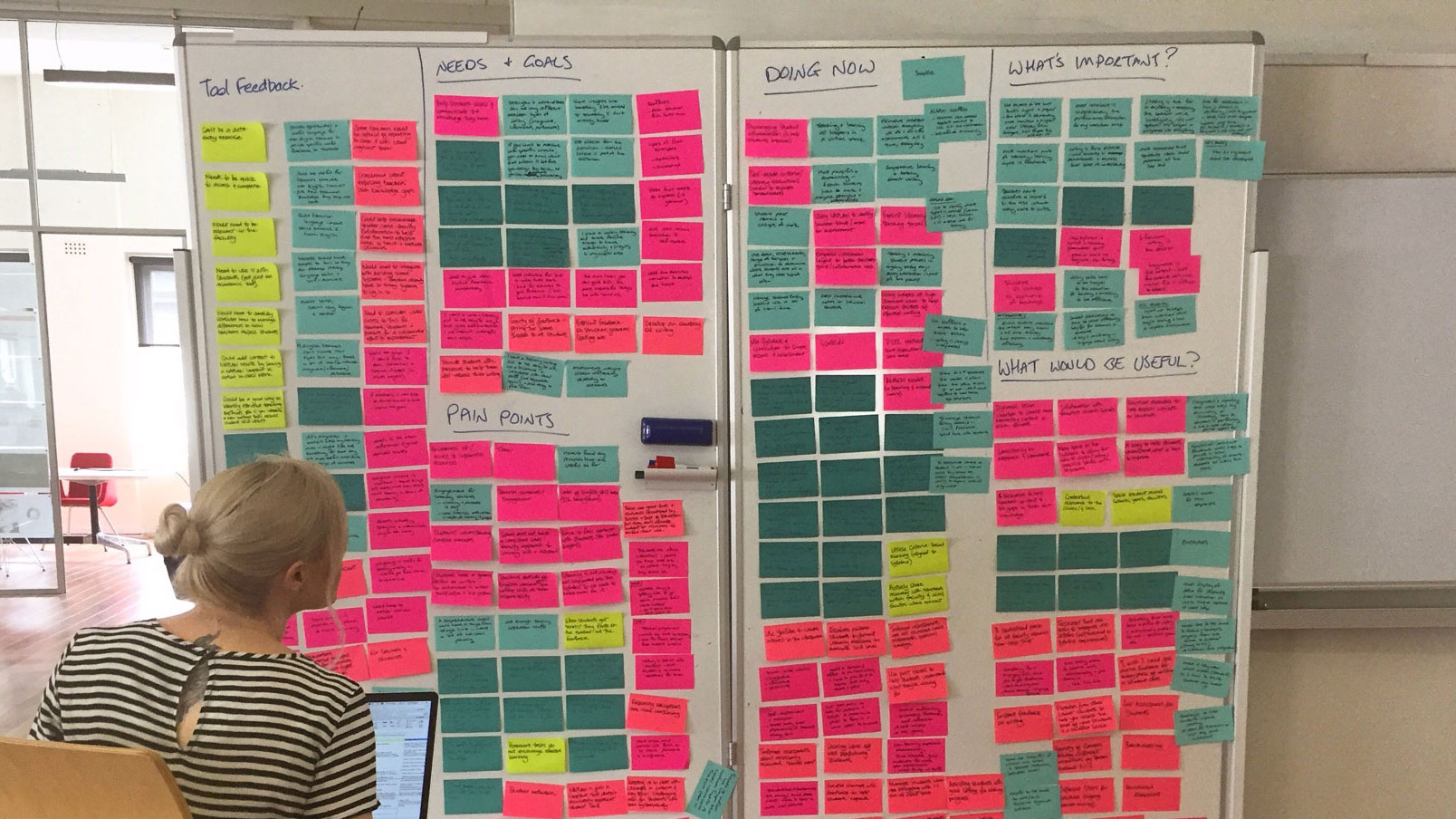NESA
Tracking progress in writing skills
Project Background
The NSW Educational Standards Authority (NESA) wanted to build an application for NSW primary and secondary teachers (with the working name of Writing Progressions) which could measure the progress of a student’s writing skills and help teachers further develop those skills in class. By using the application to understand the mechanics of writing, teachers would use conventions within different genres of writing in conjunction with curriculum content to help students transition from concrete to abstract concepts in a measurable way.

Research
As Experience Design Director on the project, I was responsible for co-ordinating and facilitating both stakeholder and user discovery sessions. Teachers recruited for user research were a mix of segments, including two primary school teachers, six high school teachers, two English teachers, two PDHPE teachers and two HSIE teachers. The focus of the research was to explore the current writing skills assessment process and uncover teachers' needs, desires and pain-points around teaching writing.

Feedback was organised around the following themes: What are teachers doing now when they teach writing? What are their needs and goals? What are their pain points? What would be useful?

Ideation and definition
These insights were used to develop personas that were used as the basis of ideation sessions with teachers and NESA stakeholders. These sessions organised potential users of the future product into teams that focused on specific teacher personas and problems.

The ideation sessions identified core goals, activities and interactions that the users might have with the product. I developed these further into a user story map which helped to define the scope and release plan for the solution.

Design
Using the story map as a framework, I rapidly prototyped several iterations in the leading up to user testing. These iterations reflected a number of changes in requirements (e.g. a shift in strategy from mobile-first to desktop-first) and significant changes to the organisation (restructured from BOSTES (Board of Studies, Teaching Educational Standards) to NESA (NSW Education Standards Authority)) and its branding.



Validation
With a prototype ready, user testing sessions were setup, once again recruiting teachers from the same demographic segments as were interviewed in the discovery phase. I developed the test plan and discussion guide around the two core tasks that needed to be successfully completed to deliver minimum value: creating an assessment and assessing a student.



Tests were evaluated with usability heuristic ratings and collated to present overall results for both tasks. The prototypes proved usable and desirable, with most feedback suggesting more scope for customisation of the assessment framework and more clarity in the labels and calls to action.


Delivery
With validation of the prototype, the project moved into production. Design was finalised in collaboration with NESA's in-house product, design and engineering teams.






